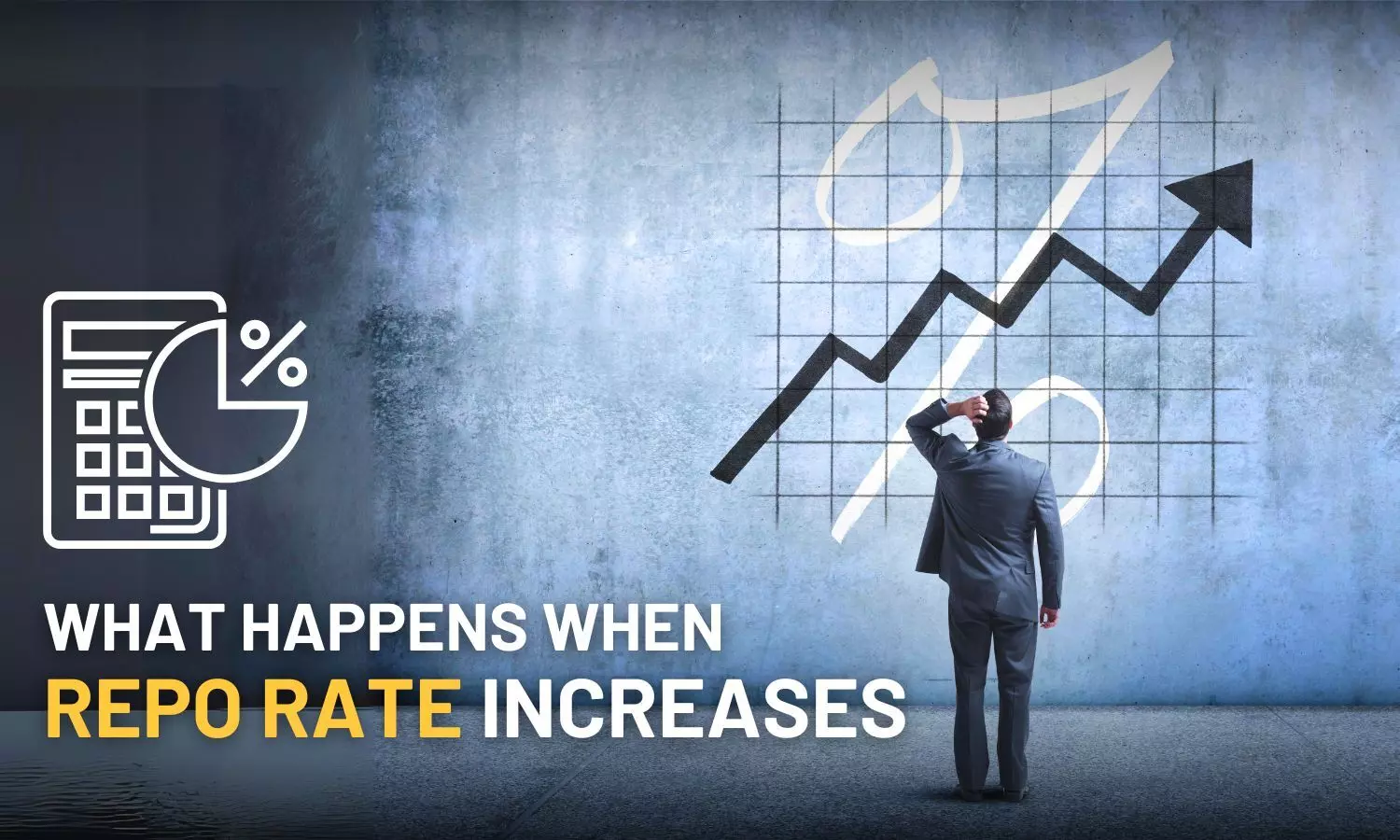What happens when the repo rate increases?
The repo rate is the major tool of the Reserve Bank of India to keep inflation under control and manage the flow of money in the economy.
image for illustrative purpose

The repo rate is the interest rate set by the Reserve Bank of India at which commercial banks borrow money from the central bank in India. In simpler terms, when banks need quick cash, they offer eligible securities like Treasury bills to the RBI and borrow funds. It is like a short-term loan where banks promise RBI to repurchase the securities at higher prices. This arrangement allows banks to access immediate funds while providing RBI with rightful control over the liquidity of the financial system.
The RBI uses the repo rate as a financial tool to create a balance between growth and inflation, managing the flow of money in the economy.
According to the RBI, the current repo rate is 6.50%, and the bank rate is 6.75%. Despite being somewhat of a technical term in the finance industry, it has a significant impact on the economy and finances. So, let's explore what happens when the repo rate increases and how it impacts various aspects. However, let us first examine the initial cause of the increase.
Increase in repo rate
Undeniably, the repo rate is a key tool in Indian monetary policy rates, regulating the country's money supply, inflation, and liquidity. Furthermore, repo rates have a direct impact on banks' borrowing costs. Greater repo rates mean greater borrowing costs for banks, and vice versa. This is where the increase in the repo rate becomes relevant, as the central bank frequently uses it to curb inflation by raising the cost of borrowing for banks. A higher repo rate can also draw in foreign investors seeking bigger returns and aid in currency stabilisation.
Impact of increased repo rate
On banks: When the repo rate increases, banks face higher borrowing costs. As a result, banks may:
i) Increase lending rates to maintain their profit margins
ii) Reduce lending to certain sectors or borrowers
iii) Increase deposit rates to attract more deposits
On borrowers: Since higher lending rates result from an increase in the repo rate, borrowers are directly impacted. This affects various types of borrowers, including:
i) Higher interest rates increase the loan repayment amounts
ii) Increase the credit card debt
iii) Lower the ability to invest and raise the cost of company capital
On the economy: Raising the repo rate may have a variety of significant effects, such as:
i) Reduce disposable income and raise the cost of paying off debt
ii) Raise capital costs while lowering new project investment
iii) Slower economic growth is caused by decreased business investment and consumer spending
On investors: An increase in the repo rate can also impact investors, particularly those invested in fixed-income securities like bonds and debentures. Higher interest rates lead to:
i) Higher yields on fixed-income securities
ii) Increased attractiveness of fixed-income securities
iii) Reduced attractiveness of equity investment
Undeniably, the increase in repo rate affects a wide range of stakeholders (mentioned above). Thus, understanding the impact of the repo rate increase is crucial in navigating the complexity of the economy.
Frequently Asked Questions (FAQs)
Q: What is the difference between bank rate and repo rate?
The fundamental difference between bank rates and repo rates is their purpose and duration. When it comes to bank rates, they have a greater economic impact and are used for long-term lending. On the other hand, the repo rate is used for short-term lending, frequently overnight.
Q: What is the current repo rate in India?
The current repo rate is 6.50%.
Q: What happens when the repo rate increases?
When the repo rate is increased, the cost of borrowing increases for banks and NBFCs.
Q: Are the repo rate and savings rates the same?
No, the repo rate and the savings rate are not the same. The repo rate is the rate at which the central bank lends money to commercial banks, whereas the savings rate is the interest rate that banks pay on savings accounts to their customers.
Q: Are investment decisions affected by repo rate rise?
Yes, an increase in the repo rate might result in higher borrowing costs for businesses and people, thereby influencing their investment decisions.

